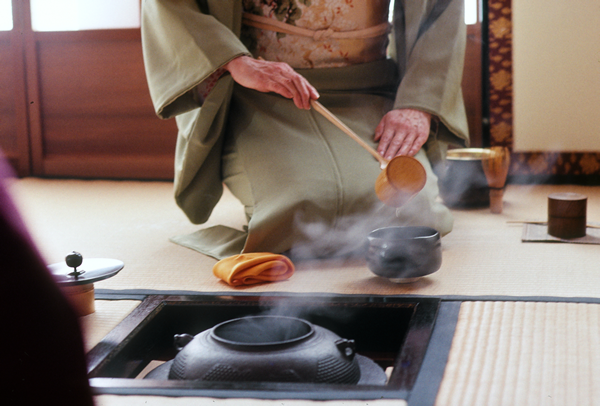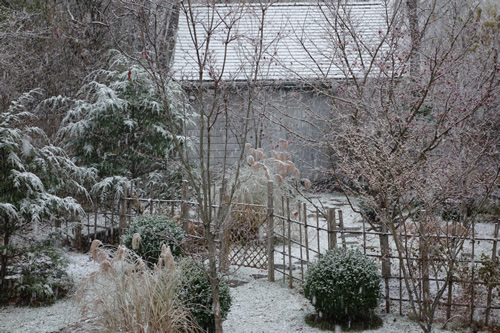
First winter storm
The first winter storm has arrived. The garden has been swept clean of leaves and we’re ready for the long, cold months ahead. The winter garden is very beautiful with just the first dusting of snow. It’s at this time that we see clearly how the evergreens and fence give the garden its structure. By mid-summer they will have faded into the background hidden by lush ferns, grasses, shrubs, and trees.
It’s a small garden and I had endless design possibilities. I could have created a formal English style garden or even modeled the backyard on my favorite Japanese designer Mirei Shigemori’s checkerboard moss garden. But the essence of this garden is contemplative. It should feel as though one were walking on a path to a rustic retreat in the mountains.
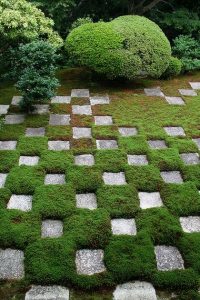
Mirei Shigemori’s moss garden in Japan

A formal English garden would fit in my backyard but the style would change the entire feeling of the space.
Jiny Blom, a well known landscape designer said “Take risks. If someone tells you something is impossible, see if you can do it. Gardening is a knife edge between disaster and serendipity.”
I felt she was talking directly to me when I built this stone path.
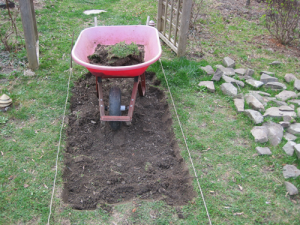
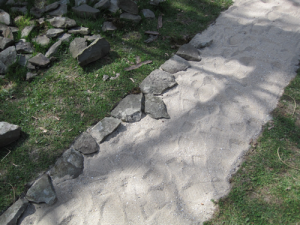
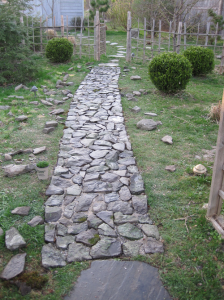
I collected the rocks from an old stone wall on my mother’s property. I dug a trench 8 inches deep and filled it with 800 pounds of rock dust and sand, then pieced the stones together like a quilt or jigsaw puzzle.
Rikyu, the brilliant tea master of the 16th century, said that the design of the Roji should be sixty percent practical and forty percent aesthetic. This path meets his criteria.
I’ve planted creeping thyme in the spaces between the stones. I wasn’t sure it would like the conditions: was there enough light, was the soil too sandy, did it drain well enough…? It’s taken a couple of years but slowly the thyme is making itself at home.
The path needs periodic weeding. I get down on my hands and knees, my nose inches from the stones and delicatly separate the weeds from the thyme. It’s a garden job that could easily be forgotten or put aside as too much trouble, but in the late afternoon when the light is gentle and the air soft, to get down on the ground inches from the earth is a task I’m grateful for.
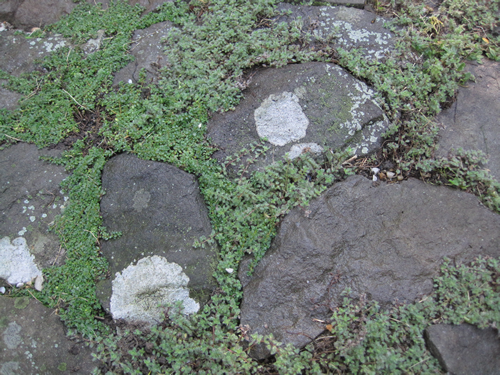
– excerpt from A Tea Garden in Tivoli
Finally spring is here. Temperatures today were in the 70’s. Low tonight in the 40’s. I’ve finally turned off my heat.
Most everything in the garden is showing signs of life.

Here’s my ‘to do list’ for the next day or two…
1) Leigh – ask to borrow his seiza bench for Ron
2) Shim up arbor which fell down with hurricane Sandy
3) Clean out tuskubai (water basin)
4) Retie fence with black twine
4) Mulch woodland bed
5) Trim grass around beds
6) Get the umbrella out from the basement to put on porch table
7) Candle both J. Pines
8) Photograph porch bed so in the fall will know where to plant blubs
9) Next year make sure to prune willow by fence
10) More woodland phlox in the outer roji –
…and on it goes.
Making a garden is no small thing nor is it one big ‘fix’. It takes years of living day to day, thinking about it and asking questions:
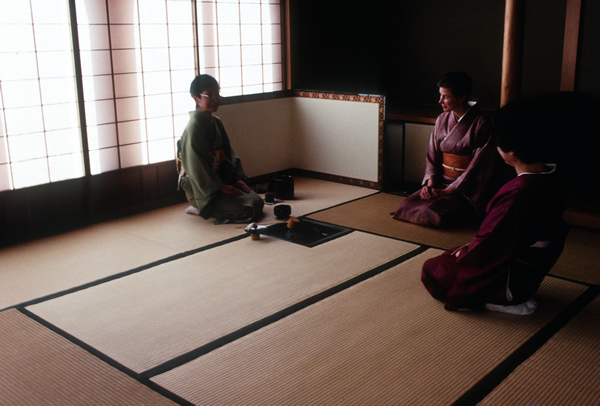
In summer, guests come early for tea, before the heat of the day. The garden is sprinkled with water; the stepping stones glisten in the early morning light, moist and cool like a path through a forest. There is a sense of bridging, crossing over, proceeding deep into the garden and leaving the dust of the world behind. The leaves rustle in the wind. A covered waiting area appears where the guests sip cool, freshly drawn water from translucent porcelain cups. Water drawn from the same source will be used later for the tea.
The tea house is made of the most ordinary materials: thatch, bark, reeds, bamboo, wood, paper, and clay. The entrance is low, a tiny door only two feet square. One by one, the guests approach a stone step, bend low, and scoot into a small room of shadow and light. They are greeted by the gentle sound of simmering water and the delicate aroma of sandalwood. A scroll hangs in the dimly lit alcove with words that speak of wind or water. Moistened reed blinds cover the windows, droplets of water glitter in the sun. The feeling is cool and refreshing.
In fall or winter, guests arrive in the late afternoon or evening. They make their way along a path scattered with red oak leaves. The tea room is warmed by oil lamps and candles, and the fragrance of aloe wood and clove fills the tiny space. The kettle simmers on a sunken hearth near the middle of the room. The guests gather close to watch as the host adds charcoal to the fire.
A light meal of hot soup, rice, grilled fish, and pickles is served on black lacquer trays and ceramic dishes. Sake is poured into shallow red cups. A cedar tray with delicacies from the mountain and the sea is passed. A stacked box filled with truffle-like sweets is left for the guests to eat. They adjourn to the waiting area, where they sit for a moment and enjoy the garden.
When the guests return, they find the tea room changed. In the alcove where the scroll had been there is now a simple flower arrangement in a bamboo vase—a maple branch and a white camellia. The kettle has been joined by objects used for making tea: a ceramic water jar and a small ceramic tea container encased in a silk bag. The mood of the gathering has deepened, and now all are silent.
The host enters the room with a single tea bowl. The sound of his feet brushing the tatami mats mingles with the gentle hissing of the kettle. His movements are rhythmic and smooth as he unwraps the tea container from the silk bag, wipes the bowl, scoops in powdered tea, and ladles water from the kettle. Movement to movement, the gestures seamlessly merge as he mixes the tea and water with a small bamboo whisk.
The tea bowl is placed in front of a guest. He picks it up. The rough black ceramic is like a warm stone in his hand, a landscape of emerald green tea inside. All is quiet: the taste of the tea, the company of others, the heart of the host. The words of the scroll still linger in the mind and lead to a deep feeling for things of the moment.
